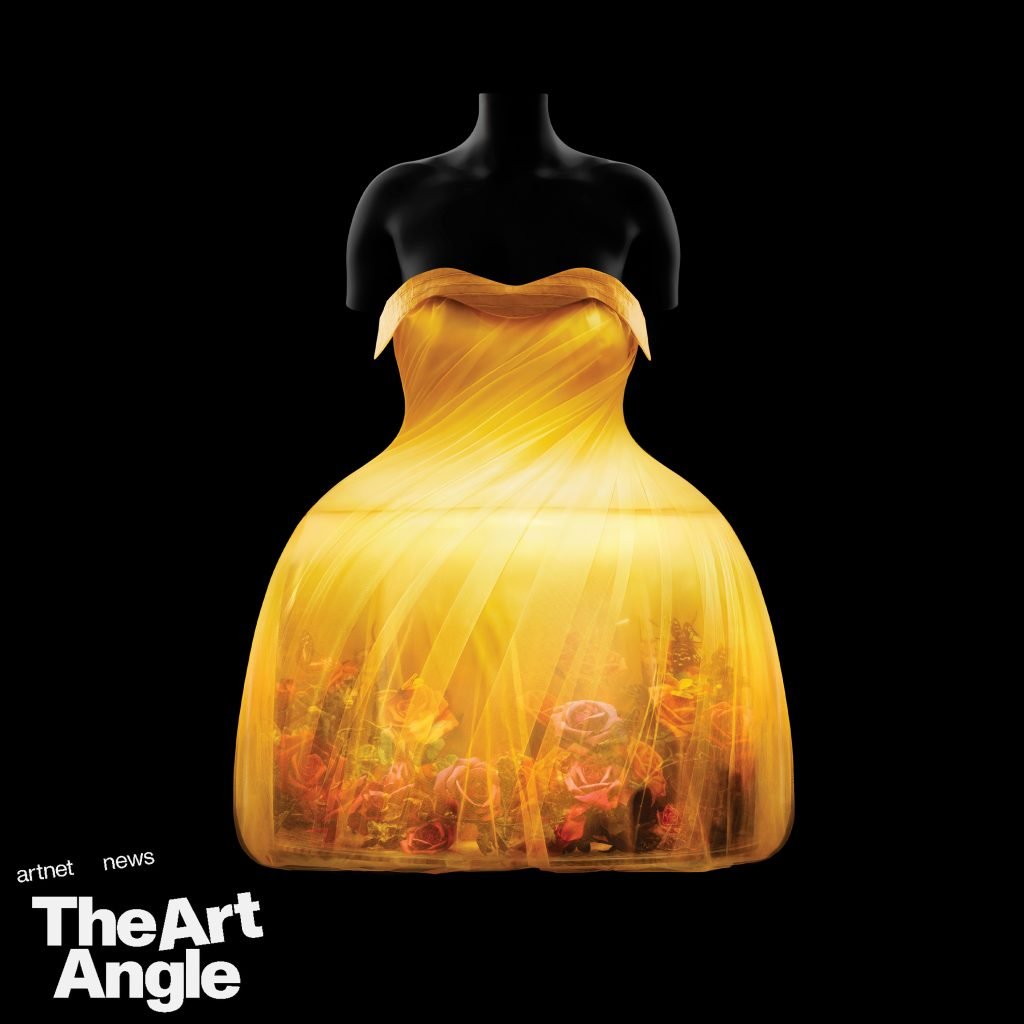The Art Angle
Re-Air: Andrew Bolton, The Reanimator: Life, Death, and Sleeping Beauties at the Met
"Sleeping Beauties: Reawakening Fashion" closes on September 2, 2024.

There is a lot to unpack—literally and figuratively—in the Metropolitan Museum’s Sleeping Beauties: Reawakening Fashion” which closes on September 2.
It’s about nature and the cycle of life (and as it turns out, there is a lot about death). It also touches on chemistry, biology, mythology, and so much more, all told through the lens of fashion. Added to this litany of themes, the show also tells the story of The Met itself, and the goings-on behind the scenes. It’s about how archived garments are preserved and how they are disintegrating. It’s not just about clothes, but about how they were worn and who wore them. It tells the story of us.
It’s a visceral exhibition of over 400 years of fashion that engages the senses. It can be a heady experience. There are the sounds of waves crashing, and birds calling, and poems being read aloud. There is textured wallpaper you can touch—and courtesy of the German artist Sissel Tollas, wallpaper you can scratch and sniff and tubes you can snort. Frankly, this portion of the exhibit kicks like a mule and is unforgettable, with scent being such a powerfully triggering memory force.
“Sleeping Beauties” was curated by this week’s guest Andrew Bolton, the Curator in Charge of The Costume Institute at The Metropolitan Museum of Art, who previously helmed such blockbusters as “Alexander McQueen: Savage Beauty,” “China Through the Looking Glass,” and “Heavenly Bodies: Fashion and the Catholic Imagination,” which were some of the most visited exhibitions in the museum’s entire history. Today’s fashion-exhibit-heavy museum landscape has a lot to do with Bolton’s successes, but with his trained anthropologist’s eye, he never fails to zero in on the intellectual and human connotations in the garments.





